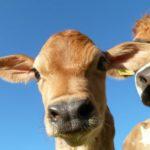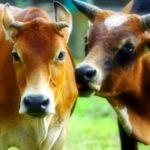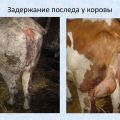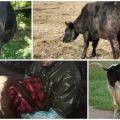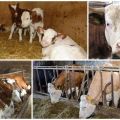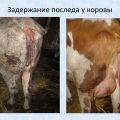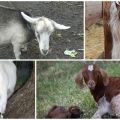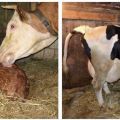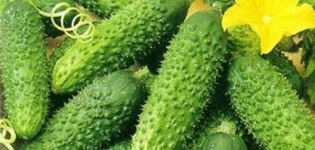Causes of bleeding in cows and what to do, prevention
Farmers regularly monitor the health of animals, organize favorable conditions for keeping livestock. The profitability of the business of large and medium-sized farms depends on this. It happens that when checking cows, physiological abnormalities are revealed, which manifest themselves in the form of blood secretions. They arise for various reasons: as a result of inflammation, the ovulatory period and other factors.
Causes of bleeding
Often, spotting in cows is seen after calving. The cause of the ailment is the inflammation of the walls of the uterus, called endometritis. On days 4-5 in the postpartum period, mucus with reddish streaks appears from the vagina. Over time, their number increases, the liquid becomes brownish-red. In addition to discharge, the animal develops symptoms: fever, loss of appetite, lethargy.
The second cause of bleeding from the vulva may be the afterbirth that did not come out. This provokes severe swelling and inflammation. If the problem is not corrected in time, it can cause death of the animal.
The appearance of bloody discharge from the genitals of a cow can provoke hypothermia. Also, a miscarriage in early pregnancy of a pregnant cow is the cause of the disease. The problem may appear due to improper feeding, caring for a female individual. With insufficient intake of vitamins and minerals, cows develop pathologies of a different nature.
Diseases associated with bleeding from the uterus:
- subinvolution of the uterus;
- endometritis;
- vestibulitis;
- miscarriage.

An experienced veterinarian will determine the cause of the problem, the degree of inflammation of the walls of the uterus, and prescribe the appropriate treatment.
What should you do when a problem occurs?
If a cow is found to have a bleeding discharge, it is necessary to urgently take measures to provide first aid, to identify the causes of the pathology. First of all, you need to call a veterinarian for diagnosis.
Multiple placenta in female cattle reduces the risk of miscarriage. A small amount of blood accumulates between the placentas and is later absorbed.
Uterine bleeding is dangerous to the health of the animal. First aid is provided after calving and removal of the placenta. Usually, veterinarians administer drugs to the animal that contract the walls of the uterus.With heavy bleeding, the cow is injected with drugs that stimulate the work of the cardiovascular system. Bloody discharge in a cow appears at different times. After calving, they may not disappear immediately. In other periods, the manifestation of pathology is associated with the emergence and development of diseases of a different nature.
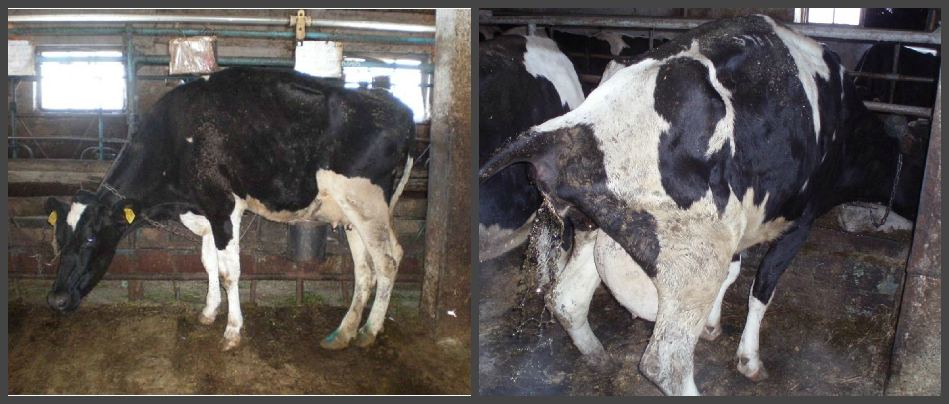
How to prevent bleeding from a cow?
The main rule for preventing the development of pathologies is proper nutrition and care for animals. A competent feeding ration should contain a sufficient amount of micro and macro elements, vitamins and minerals. The breeder should minimize the amount of succulent feed and protein foods.
Comfortable living conditions are organized for a pregnant cow. The room must be dry and clean, with good ventilation. A specialist should monitor the level of hormonal levels.
Preventive measures are followed from the moment the cow is inseminated until the end of the postpartum period. These include:
- minimizing the risk of injury to the animal;
- isolation of an individual from sick animals;
- adherence to the diet, maintenance in accordance with sanitary standards and rules;
- the diet should contain only high-quality feed;
- any diseases that have arisen should be promptly and completely eliminated.
To reduce the risk of postpartum complications, the cow should be checked regularly by a veterinarian. The animal is injected with vitamin and mineral supplements in a timely manner. So the immunity of livestock is strengthened, the likelihood of disease is reduced.
If, after calving, the cow has a discharge with blood, which subsequently decreased or passed, this indicates a natural manifestation of the normal functioning of the body. With an increase in bleeding, emergency measures are taken to eliminate the pathology. For successful childbirth and the appearance of healthy offspring, it is necessary to identify the symptoms and the reasons for their appearance in time. A competent approach, regular inspection of livestock will not only help preserve the health of animals, but also life.

